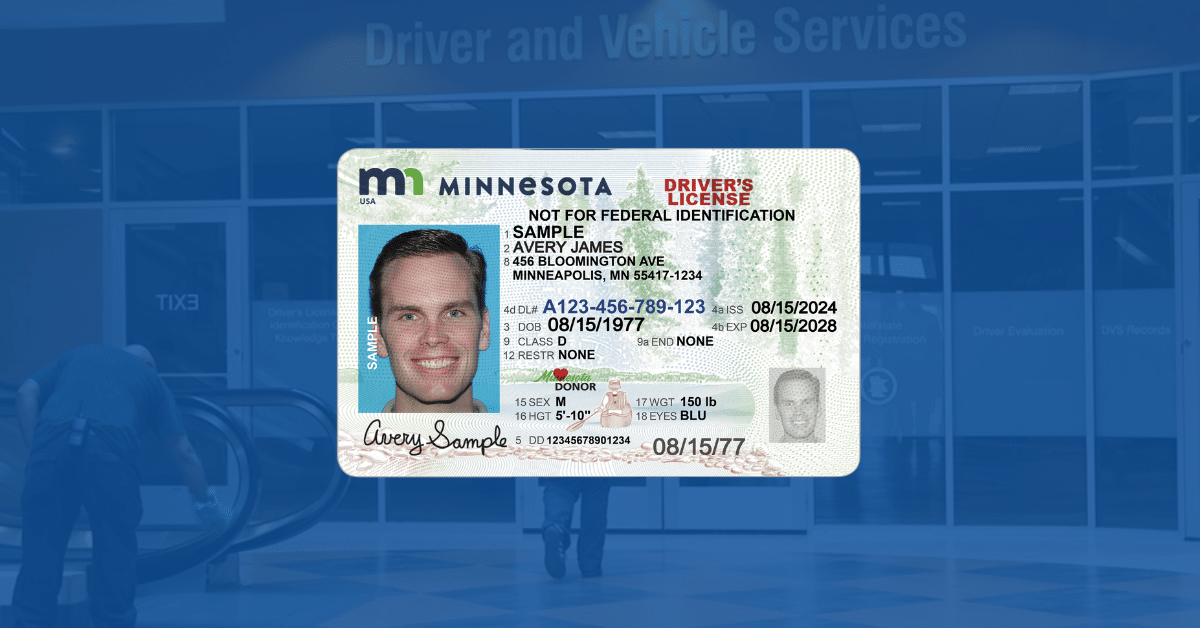Last updated on November 30th, 2023 at 11:37 am
Our experts’ opinions on industry shifts and trends for identity verification in the 2024
In an era where digital interactions and transactions dominate our lives more than ever before, the criticality of robust identity verification and seamless ID scanning solutions has never been clearer. As we stride into 2024, the landscape of identity verification is undergoing a transformative evolution, fueled by cutting-edge technologies and a growing emphasis on security and user experience.
From biometric advancements that seem straight out of a sci-fi movie to adaptive AI systems that stay one step ahead of fraudsters, this year promises to be a dynamic one for the realm of identity authentication. Join us as we delve into the top identity verification and ID scanning trends for 2024, uncovering how these trends are reshaping industries and fortifying the digital trust that underpins our interconnected world.

Age verification – coming to internet transactions near you
As Congress continues to debate broad-sweeping legislation to protect kids online, states are passing their own laws to limit children’s access to adult spaces online. These protections include requiring age verification for internet activity such as:
- Age verification for accessing adult websites/pornography
- Age verification for creating a social media account
- Age verification for purchasing delivery alcohol (recent reports show that minors are easily using tools like DoorDash to have alcohol delivered)
- Age verification for purchasing tobacco and vape products via eCommerce
Consumer privacy advocates have come out largely against these measures due to security concerns, as the well-meaning laws typically don’t include much technical language around storage and security of consumer data. Additionally, the laws are easily circumvented by usage of VPNs. Some politicos have expressed concern that legislation such as the RESTRICT Act, meant to specifically target Chinese tech such as TikTok, could criminalize usage of VPNs.
This paints a picture of an internet landscape which is overall much more highly regulated, and where your internet usage, browser history, and purchase patterns, are clearly linked to your IRL identity, and these type of efforts dovetail with efforts from companies like X/Twitter and Lyft launching ID verification to verify their users’ identities.
We predict 2024 will see websites across a wide variety of industries implementing more stringent ID checks and rely less on the “Are you over 21?” pop-up boxes that are easily lied to. With the upcoming election we also predict that digital identity verification for users on forums and news sites will become a hot topic in the fight against bots, trolls, and fake news.

Digital ID dominance
The adoption and rollout of digital IDs and mobile drivers’ licenses as companions to physical identity documents has been strong and steady since Louisiana announced the nation’s first digital ID, LAWallet, in 2019. As of late 2024:
- 11 states were live with active digital IDs (including 4 who use Apple Wallet mDL credentials)
- 9 states were in progress of launching interoperable digital IDs
- 12 states were actively exploring pilot programs for digital IDs
With the TSA accepting mDLs and digital IDs at most major airports, the usefulness of these documents continues to grow as well. Apple has announced, with the launch of iOS 17, age verification capabilities that will allow age verification apps to read digital credentials, meaning that bars, restaurants, dispensaries, and other businesses who use VeriScan can use an iOS device to read Apple Wallet IDs, as well as other, compatible digital IDs.
The number of states issuing digital IDs will continue to grow, and the number of businesses and industries that accept digital IDs will continue to grow as well. Although 2024 may not be the year consumers start leaving their physical drivers license at home, it will likely be a year of rapid growth in consumer and business adoption of this new ID format.

Fraud fighting using ID scanning
Theft of all kinds is up. In August 2023, Dick’s Sporting Goods blamed theft for a lackluster earnings call, which has led to discussions across many industries. When there is economic stagnation, or inflation negatively impacting consumer purchasing power, theft and fraud increase. For this reason, we are bullish on all types of security and fraud-fighting technology. Dollar General and FiveBelow were other major retailers who blamed theft for poor earnings.
ID scanning is gaining particular traction due to its ease of implementation. Scanners can be set up to verify drivers, vendors, or prospective customers before they take ownership of high value cargo or products. The ID scanners run the ID through authenticity checks to catch fakes, and the system can even query databases like the DMV or Social Security Administration to provide further confidence in the individual’s identity.
Verifying the ID’s authenticity, and then capturing the individual’s information, allows for a much clearer audit trail to prevent fraud. Businesses can trace fishy interactions and transactions back to an individual to look at patterns, add comments to profiles to alert the team when a suspicious individual presents an ID, and integrate this customer profile into their core systems such as their point-of-sale, bill of lading software, and ERP.
For retailers, scanning IDs at the door is unlikely. But scanning IDs for customer returns, or using digital identity verification on large BOPIS (buy online, pick-up in store) purchases can create additional speedbumps to plug some of the highest risk customer interactions.
Not only does scanning IDs help catch fraudsters, but the mere presence of ID scanners often acts as a deterrent. Using scanners to keep troublemakers out has been used in the entertainment and nightlife industry for years, but retailers, manufacturers, and freight companies are now starting to take note.
In 2024, we expect ID scanning by logistics, freight, automotive, and retail businesses to increase as one method to help reduce fraud. While catching fake IDs and recording customer information is only one arrow in a business’s fraud prevention quiver, it is an easy way to push back against scammers.

Sophisticated fake IDs made by machine learning
The buzzword of generative AI is everywhere. But usage by fraudsters is a key concern. As security software becomes more sophisticated, so are the systems used by bad actors to design fake IDs, create deepfakes, and build synthetic identities.
While our software is capable of catching roughly 95% of fake IDs, every year we put more and more authenticity checks, liveness checks, and anti-spoofing tools into our software to fill gaps caused by smart scammers.
The rapid advancement of deepfake technology presents a potential challenge to digital identity verification tools, introducing a new layer of complexity to an already intricate landscape. With deepfakes becoming increasingly sophisticated, there arises the ominous possibility of these manipulated videos and audios being used to deceive identity verification systems. Imagine a scenario where a fraudster employs a convincingly fabricated video featuring the target individual, rendering facial movements and voice to an astonishing degree of accuracy.
Such deepfakes could potentially bypass facial recognition and voice authentication systems, exploiting the tools that rely on biometric data for verification. As these malicious endeavors grow in complexity, the arms race between deepfake creation and detection intensifies, necessitating an even more robust and adaptable approach to digital identity verification.
We predict that 2024 will see an even greater increase in fraud that is empowered by generative AI and machine learning. There are already highly publicized instances of fraud and theft powered by deepfakes in China and Hong Kong. But this type of theft is likely to become a global phenomenon in 2024.

Government-level involvement in identity verification standards
The IRS and VA are among government agencies which have comprehensive identity management systems (though neither are without controversy), and the success of these programs has led to the Digital Identity Act, now being debated by the Senate. The DIA’s ultimate goal is mostly economic – to help businesses defend against fraud. But implementation of a national digital identity is certainly likely at some point in the future given the success of digital IDs and disparate systems being used by government agencies.
At the same time, the government continues to debate and discuss privacy, consent, and data management. There is no national Consumer Privacy Act, but the California Consumer Privacy Act (CCPA) has become the de facto standard. Nine states – California, Virginia, Connecticut, Colorado, Utah, Iowa, Indiana, Tennessee, and Montana – have active consumer privacy laws. And others have laws related to biometric data, facial recognition, and consent. These laws govern many aspects of identity verification and how businesses interact with customer data, including:
- Inclusion of consent language before identity verification or storage of any PII
- Consumer right to opt-out of having their information saved
- Consumer right to be forgotten and deleted from business systems
- Data storage standards for customer PII
- Data storage lengths for customer PII including intervals for full system flush
- KYC/AML protocols for any business engaging in lending
- Acceptable uses for facial recognition, iris scanning, fingerprint scanning and other biometric data processing
With both federal and state standards in flux, we expect that businesses will continue to play parkour to ensure their systems are flexible enough to operate in sometimes contradictory jurisdictional requirements. And we anticipate that more standards will be coming down the pipe in 2024 as the government continues in their attempt to codify the ways in which businesses interact with consumer identity.
Conclusion
As we conclude our exploration of the top identity verification and ID scanning trends for 2024, one thing becomes abundantly clear: our approach to establishing trust and authenticity in the digital realm is advancing at an unprecedented pace.
The rise of digital IDs marks a paradigm shift, transcending traditional identification methods and paving the way for a more seamless and secure online experience. The innovative utilization of ID scanning for fraud prevention showcases our collective commitment to outsmarting malicious actors, while simultaneously streamlining legitimate interactions. Online age verification steps into the spotlight, not only for legal compliance but also for safeguarding the vulnerable in a rapidly evolving digital landscape. The alarming sophistication of fake IDs is a reminder that as our defense mechanisms progress, so too do the tactics of those who seek to breach them.
Finally, the establishment of government standards for identity management serves as a crucial foundation, ensuring uniformity and reliability across industries. As we navigate the intersections of technology, security, and user experience, the trends of 2024 underscore the indomitable spirit of innovation and adaptation, propelling us into an era where trust and digital identity stand stronger than ever before.




